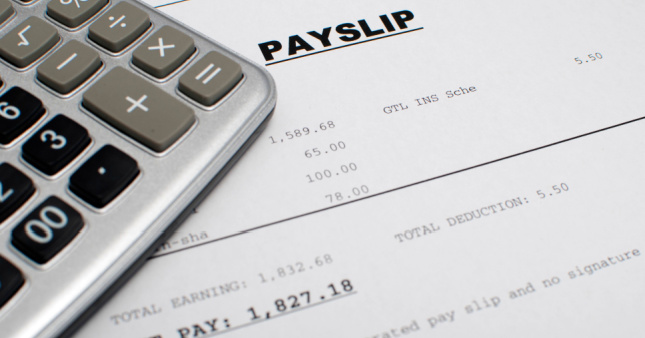
An underpayment is when an employee is not paid their minimum entitlements for the work they do and when they do it. These entitlements may include overtime rates, penalty rates, payment for annual leave or leave loading, and allowances, for example.
Employees must be paid at least the minimum entitlements for the job they do and the industry they are in. The minimum amount of pay they should receive will generally depend on the applicable industrial instrument, e.g. a modern award or an enterprise agreement.
If the employee is award free or not covered by a registered agreement, then the Fair Work Commission’s Minimum Wage Order will determine their minimum pay rate in accordance with the national minimum wage. An employment contract may provide for a higher wage than the minimum entitlement.
Identifying Wage Underpayment
You may not know you have underpaid an employee until the employee raises the matter or the Fair Work Ombudsman conducts an audit. To help identify if you are paying your employees correctly you should review wages against the relevant industrial instrument and/or the national minimum wage. Make sure you keep up to date with any pay increases or award changes, e.g. annual minimum wage increases, which usually take place from the first full pay period on or after 1 July each year.
Ensure the employee is employed under the correct award and at the appropriate classification level under that award for the job they do. The employee’s classification level or pay rate may change, or they may be entitled to receive loadings or allowances as they gain more experience, complete further training, or are promoted to a supervisory level. Bear in mind that a junior or an apprentice pay rate may increase in different ways, which can be based upon age, time served in role or competency.
Steps to Correcting an Underpayment
There are a series of steps to follow in order to correct an underpayment once identified
First of all, work out when and how long the employee was underpaid – this is the so-called underpayment period.
Next, check the employee’s time and wages records for that period to work out how much the employee was actually paid. This is the total amount the employee was paid for the underpayment period and is the gross amount that you paid the employee before tax was deducted.
Work out how much the affected employee should have been paid in wages for the underpayment period, determine and record any other entitlements owing for the period separately, and check whether you need to pay any additional tax or superannuation. Then subtract the total amount paid to the employee for the underpayment period from the total amount the employee should have been paid – the difference is the underpayment amount.
Discuss the underpayment amount with the employee. Explain what caused the underpayment, what you have done to fix it going forward, how you have calculated the amount the employee has been underpaid, and when the employee will be back paid the amount owing.

BrightHR has a Blip tool which allows employees to clock on and off so you can track their hours and location. You can generate a report that will show the number of shifts and hours worked, breaks and their duration and the total number of hours worked excluding those breaks.
You can manage and keep track of employee rosters, timesheets, leave and absenteeism to help you pay your employees correctly with BrightHR. You can generate and print reports, and then store wage and time records and related documents securely in the cloud to comply with your record-keeping requirements.
If you cannot afford to make the payment immediately, please seek advice as to next steps. Employsure can help you pay your employees correctly and keep you up to date with wage increases. Call us for free initial advice on 1300 651 415.
Keeping Pay Records
As part of their workplace obligations, employers should keep comprehensive employee records, and give employees payslips that include (amongst other things) the pay period, the gross and net amount paid to the employee, the rate of pay and if an hourly rate, the amount of hours worked at that rate as well as details of any penalty or overtime rates and hours worked. The payslip should also provide details of any loadings, allowances or other entitlements or deductions for that period. The Act further provides that employers must keep wage and time records for 7 years.
Get Workplace Advice Now
Call Our Team of Expert Advisers Who Will Help You with Your Workplace Questions.
Frequently Asked Questions
Can An Employee Claim Underpayment Of Wages?
Yes, an employee can claim underpayment of wages in a court of appropriate jurisdiction.
Are There Penalties For Underpayment?
Yes, the Court may order penalties if provisions of the Fair Work Act 2009 or other legislation have been breached.
How Do I Fix An Underpayment?
- Check the industrial instrument, employment contract or minimum wage order for the employee’s minimum entitlements.
- Make sure you have applied the right award and classification level (if applicable)
- Establish the period that the employee was underpaid
- Work out how much in total the employee was underpaid (before tax) and list any further entitlements owing separately
- Work out what the employee was entitled to be paid for the underpayment period
- Deduct the actual amount paid from the amount the employee should have been paid for the period
- Check for any additional tax and superannuation payments that may be owing. You may need to seek advice from a taxation professional to work this out.
- Meet with the employee and explain how the underpayment occurred and the steps taken to resolve it
- Back pay the employee as soon as possible or negotiate a payment plan and record it in writing
How Long Does An Employer Have To Correct An Underpayment?
It depends. Ideally an employer should rectify an underpayment as soon as possible and backpay the underpaid amount either separately or as part of the next pay cycle. This may not be feasible depending on the circumstances so the employer and employee may agree a payment plan in writing.
Can My Employee Refuse To Work If I Underpay Them?
No. If an employee refuses to work, then they are in breach of their contractual obligations.
How Far Back Can An Employee Claim Underpayment Of Wages?
An employee can only claim backpay through court proceedings for six years after the underpayment.










